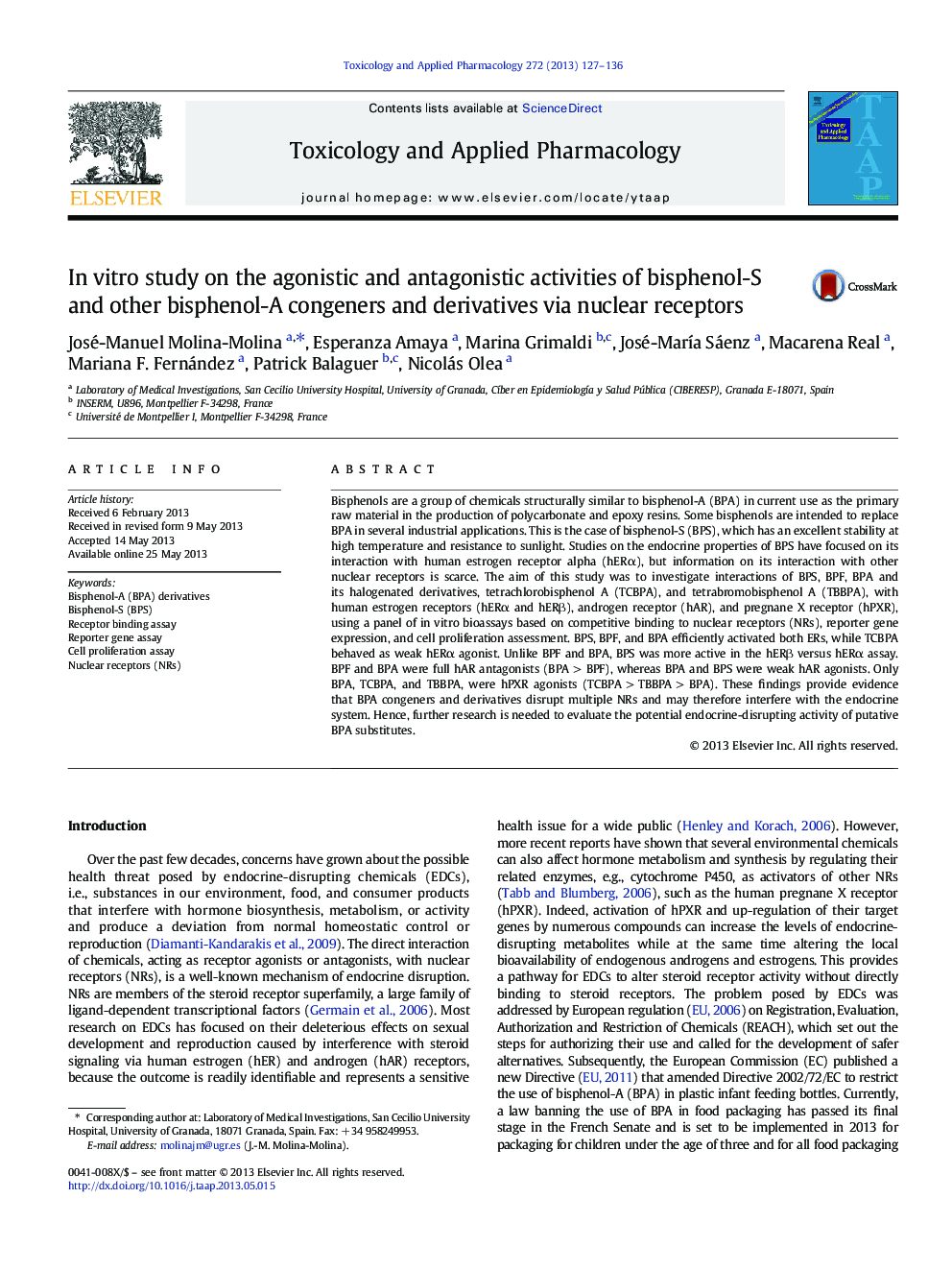| کد مقاله | کد نشریه | سال انتشار | مقاله انگلیسی | نسخه تمام متن |
|---|---|---|---|---|
| 2568608 | 1128468 | 2013 | 10 صفحه PDF | دانلود رایگان |

• We investigated the agonist/antagonist activities of BPS, BPF, BPA, TCBPA and TBBPA.
• The direct interaction of these compounds with hERα, hERβ, hAR and hPXR was studied.
• BPA congeners and derivatives were found to disrupt multiple NRs.
• Further evaluation of their role as endocrine-disrupting chemicals is needed.
Bisphenols are a group of chemicals structurally similar to bisphenol-A (BPA) in current use as the primary raw material in the production of polycarbonate and epoxy resins. Some bisphenols are intended to replace BPA in several industrial applications. This is the case of bisphenol-S (BPS), which has an excellent stability at high temperature and resistance to sunlight. Studies on the endocrine properties of BPS have focused on its interaction with human estrogen receptor alpha (hERα), but information on its interaction with other nuclear receptors is scarce. The aim of this study was to investigate interactions of BPS, BPF, BPA and its halogenated derivatives, tetrachlorobisphenol A (TCBPA), and tetrabromobisphenol A (TBBPA), with human estrogen receptors (hERα and hERβ), androgen receptor (hAR), and pregnane X receptor (hPXR), using a panel of in vitro bioassays based on competitive binding to nuclear receptors (NRs), reporter gene expression, and cell proliferation assessment. BPS, BPF, and BPA efficiently activated both ERs, while TCBPA behaved as weak hERα agonist. Unlike BPF and BPA, BPS was more active in the hERβ versus hERα assay. BPF and BPA were full hAR antagonists (BPA > BPF), whereas BPA and BPS were weak hAR agonists. Only BPA, TCBPA, and TBBPA, were hPXR agonists (TCBPA > TBBPA > BPA). These findings provide evidence that BPA congeners and derivatives disrupt multiple NRs and may therefore interfere with the endocrine system. Hence, further research is needed to evaluate the potential endocrine-disrupting activity of putative BPA substitutes.
Journal: Toxicology and Applied Pharmacology - Volume 272, Issue 1, 1 October 2013, Pages 127–136